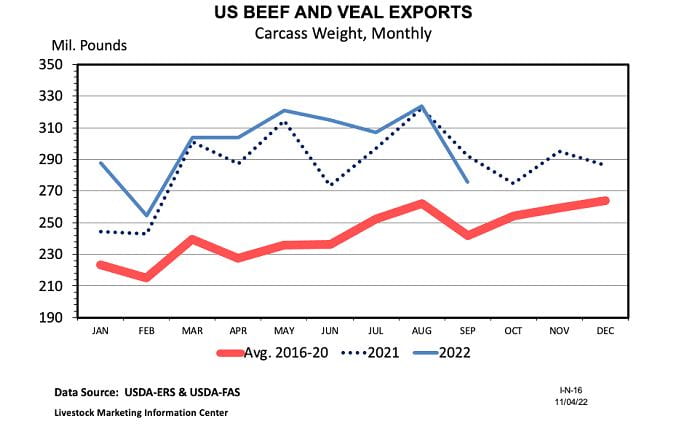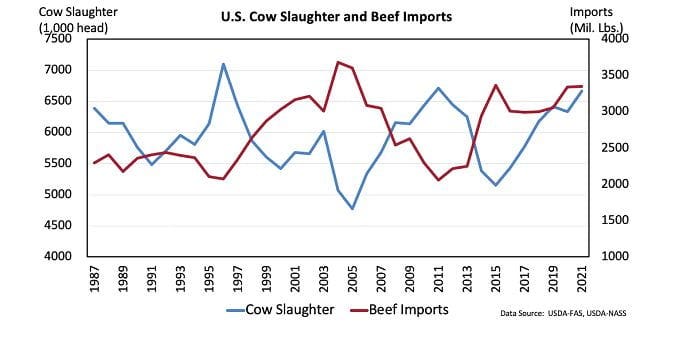September beef exports are lower compared to 2021
The rate of domestic cow slaughter is impacting beef imports greatly.
November 9, 2022

Last week USDA-ERS published the meat international trade data for September. There was a noticeable decline in September beef exports, totaling 275.78 million pounds or 5.7% lower year over year. September beef imports totaling 258.33 million pounds were 9% below year-ago levels. Declines in beef exports and imports were expected.

Beef imports this year have been below 2021 since June. Beef imports from Argentina, Brazil, New Zealand, and ROW were all down double-digits in September. Imports from Australia and Mexico were both down 4%. Imports coming from Canada increased by 7% in September. Despite declines in September, cumulative beef imports are still 6% higher year over year, which reflects large Jan-Mar imports. It remains to be seen whether declining imports for the remainder of 2022 will offset large first-quarter imports.
While many factors could be impacting declines in beef imports, perhaps, the biggest one is the rate of domestic cow slaughter. The second graph in this article (below) shows the relationship between annual beef imports and total domestic cow slaughter (beef and dairy). Beef imports are lower when cow slaughter is higher, and vice versa. Beef imports and domestic cow slaughter contribute to ground beef production and complement one another.

This year has been strong for beef exports. In January, USDA actually expected 2022 beef exports to be 5% below 2021 exports. As of September, cumulative beef exports are 5% higher year over year. Year-to-date (YTD) beef exports to mainland China, Taiwan, Vietnam, and ROW are all up double digits compared to last year. YTD beef exports to Canada and South Korea are close to even with last year. Beef exports to Mexico are 14% lower year over year.
USDA expects 2022 beef exports to be 4% higher year over year. The decline in September helped move exports closer to USDA’s forecast. USDA expects beef exports to decline in 2023. Part of their prediction reflects a situation of declining 2023 beef production. Meaning you can’t export what you don’t have. However, there are also concerns about economic recovery in other countries, which could alter trade forecasts next year.
You May Also Like


.png?width=300&auto=webp&quality=80&disable=upscale)
